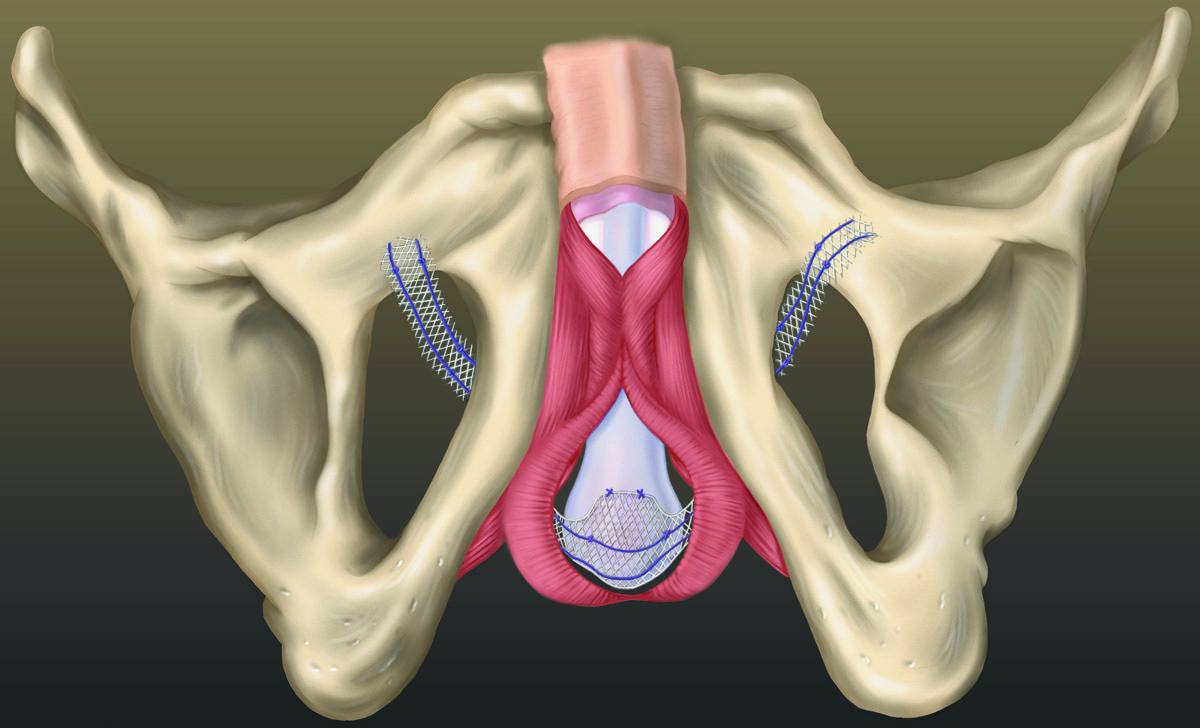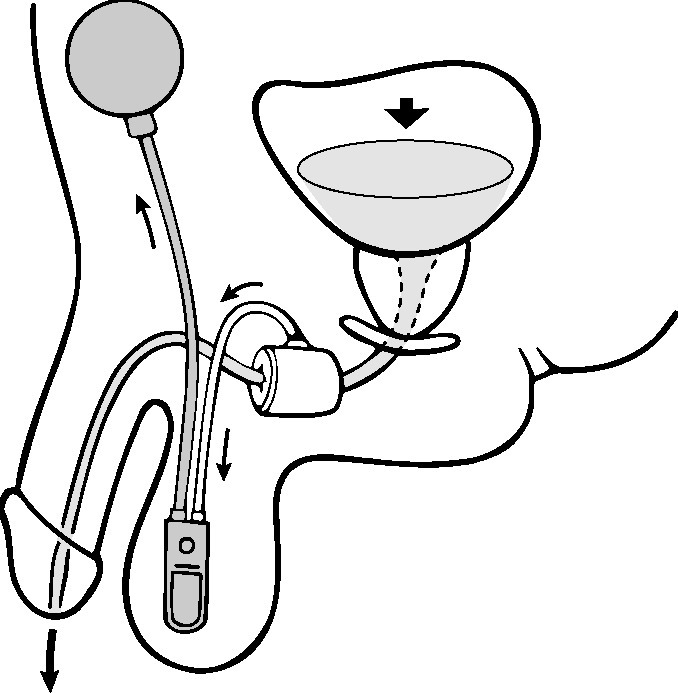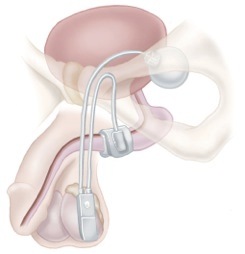Male Stress Incontinence
Introduction to Urinary Incontinence in Men
Male incontinence is categorized into two subtypes: stress incontinence or urge incontinence. Urge incontinence is leakage that results from an overactive bladder. The sense of urgency is a feeling like you cannot make it to the bathroom in time, which leads to leakage. Urge incontinence is often treated with medication or other non-surgical treatments. This is contrary to stress incontinence, whereby you leak with cough or laughter. In some severe cases, the urine simply just leaks out continuously. This is called total stress incontinence, which can occur in men after prostate removal or radiation treatment. Male stress incontinence can be treated with pelvic floor exercises called Kegel Exercises. If this fails, you may require an operation to restore continence.
Causes of Male Stress Incontinence
Male stress incontinence is caused by damaged or weakened urethral sphincter in the setting of a bladder that is able to store urine adequately. The urinary sphincter is the muscle that controls the flow of urine. When damaged, the sphincter loses the ability to squeeze and close the urethra, resulting in leakage. Male stress incontinence most often occurs after prostate cancer surgery (prostatectomy), but it can also rarely occur after trans-urethral prostate surgery (TURP) and/or radiation therapy for prostate cancer. Following radical prostatectomy, portions of the urinary sphincter muscle that are responsible for keeping you dry are removed to achieve cancer control. It is known that patients with a longer urethra just in front of the prostate will have better continence following radical prostatectomy. In many cases, partial stress incontinence occurs after surgery and improves up to 18 months following. After 2 years from surgery, it is unlikely to improve, and consultation should be sought.
Symptoms of Stress Incontinence
Many men will complain of urine leakage with cough or laughter. In some cases, men will complain of urine leakage when bending or standing. In severe cases, urine will continuously leak out. The severity of the leakage is measured by the number of pads or diapers you use per day. This is vital information which will be collected from you at the time of your evaluation.
Work-up and Evaluation
The mainstay of work-up is a history and physical examination. Dr. Osterberg will assess your symptoms and gain a sense of the degree of your leakage. Pertinent history, such as prior radical prostatectomy and/or radiation therapy, will be obtained. Dr. Osterberg may require a cystoscopy, a camera test to look inside your urethra and bladder. This test is routinely performed in the office. Here the health of your urethra will be evaluated.
Nonsurgical Options for Stress Incontinence
There are several nonsurgical options for men with mild to moderate stress incontinence:
Kegel Exercises. Kegel exercises, also known as pelvic floor exercises, consist of contracting and relaxing the muscles that form the pelvic floor and are responsible for interrupting the urinary stream mid-void. These same muscles that stop the urinary stream may be strengthened to improve continence. A typical regimen for exercise consists of contracting and relaxing the pelvic floor muscles 10 times every hour several times per day. If you underwent a radical prostatectomy, you may be asked to perform these exercises before and after surgery.
Penile Clamp. The penis clamp, also known as a Cunningham clamp, is a simple, nonsurgical device that is placed around the mid shaft and simply compresses the urethra. Because the device is compressing the urethra, there is a limited amount of time for which it can be worn daily. Typically, the device should be released every few hours to help restore blood flow, and ultimately drain the bladder.
Condom Catheter. A condom catheter is a noninvasive device that is placed just like a prophylactic condom over the penis, however it is connected to a catheter which drains to a urine bag. A condom catheter prevents leakage and ultimately keeps your dry.
Surgical Options for Stress Incontinence
There are two main surgical options for men with stress incontinence.
Male Urethral Sling. The male urethral sling is a great option for men with mild to moderate stress urinary incontinence (ie. 1-2 pads per day usage). The male sling is comprised of mesh that sits at the bottom portion of the urethra underneath the scrotum and is tethered upward to provide urethral compression. The sling is like a hemorrhagic that compresses the urethra and moves the sphincter back to its natural position to restore bladder control. It does not require any action and restores continence in up to 70% of individuals with mild to moderate urine leakage. The device is placed using a small incision underneath the scrotum, typically on an outpatient basis. Most patients are continent immediately and can resume normal activity within a few days. Like with any mesh device, there is always a risk of infection, erosion, postoperative pain, or device failure.
Animation of Advance Urethral Sling
The Artificial Urinary Sphincter. The artificial urinary sphincter is the gold standard for male stress urinary incontinence. The device is best used in men with moderate to severe urine leakage or men who have had a history of radiation treatment to the pelvis or prostate. The device works using hydraulics: a cuff is wrapped around the urethra, and when you need to urinate, you squeeze and release a pump in the scrotum that moves fluid from the urethral cuff into a reservoir placed in the abdomen. This allows for urine to leak out until the urethral cuff re-inflates automatically over 90 seconds. The device can be implanted on an outpatient basis and is activated roughly 6 weeks after surgery. Like with any prosthetic device, there is always a risk of infection, erosion, or device malfunction.
Animation of Artificial Urinary Sphincter
Choosing the Right Surgery for You
Dr. Osterberg will review with you treatment options after performing a thorough work-up and physical exam. In large part, the operation advised is dependent on the degree of urine leakage. Men with large volumes of leakage (greater than 3 pads per day usage) or total loss of urinary control are best treated with an artificial urinary sphincter. Men with mild urine leakage (between 1 and 2 pads per day) may benefit from the male sling. All options will be reviewed at the time of your consultation.
Follow Up
If Dr. Osterberg places a Male Sling, the device is immediately functional. If Dr. Osterberg places an Artificial Urinary Sphincter, you will return to the clinic in 6 weeks to have it activated (turned-on). At this time, you will review how to use the device. Following surgery with either device, you will see Dr. Osterberg every 6 to 12 months to reassess your symptoms and/or leakage. The goal is to reduce your pad usage to minimal, i.e. a safety pad for occasional leakage.









